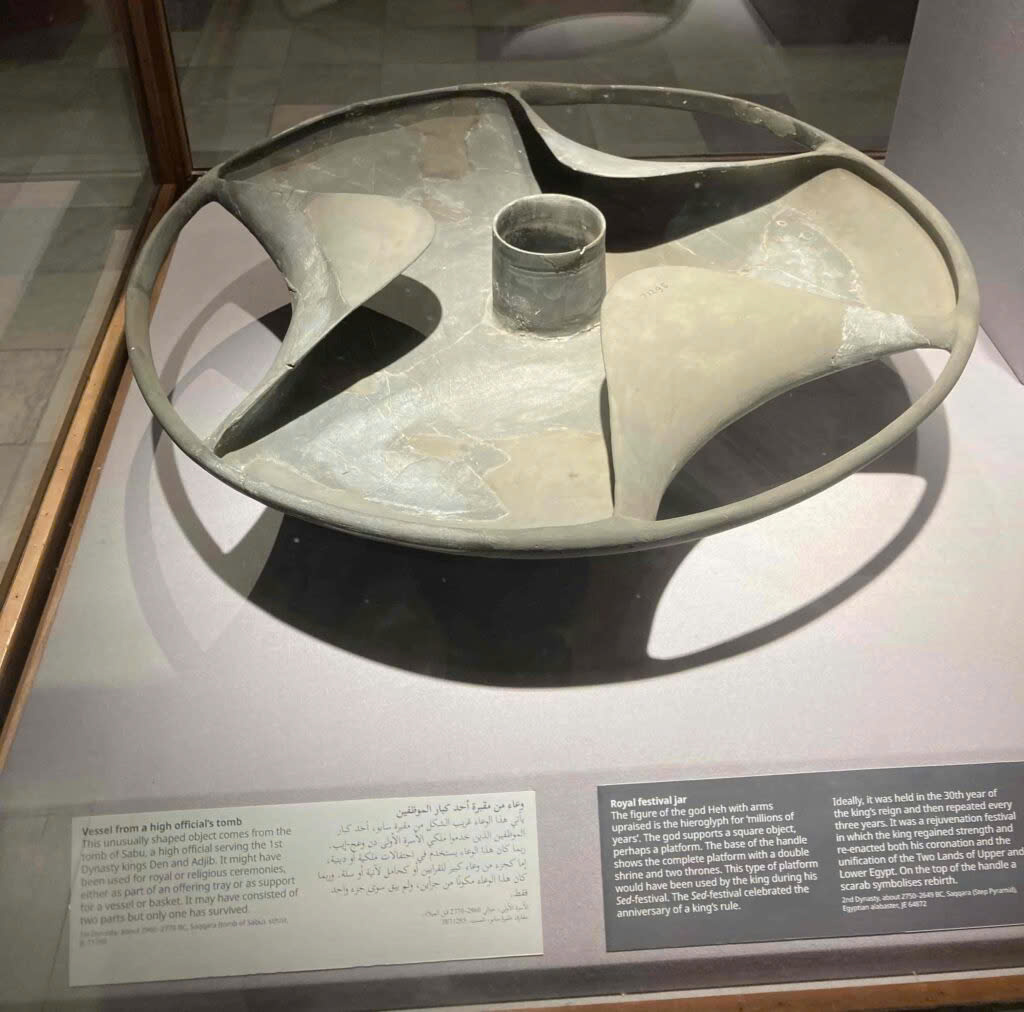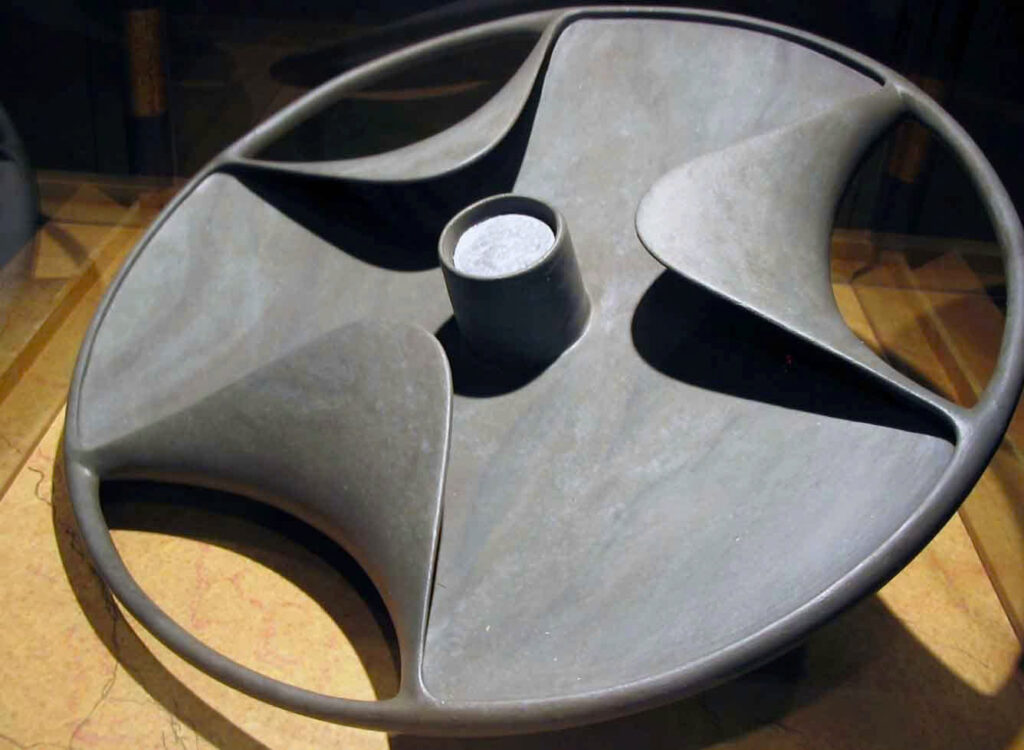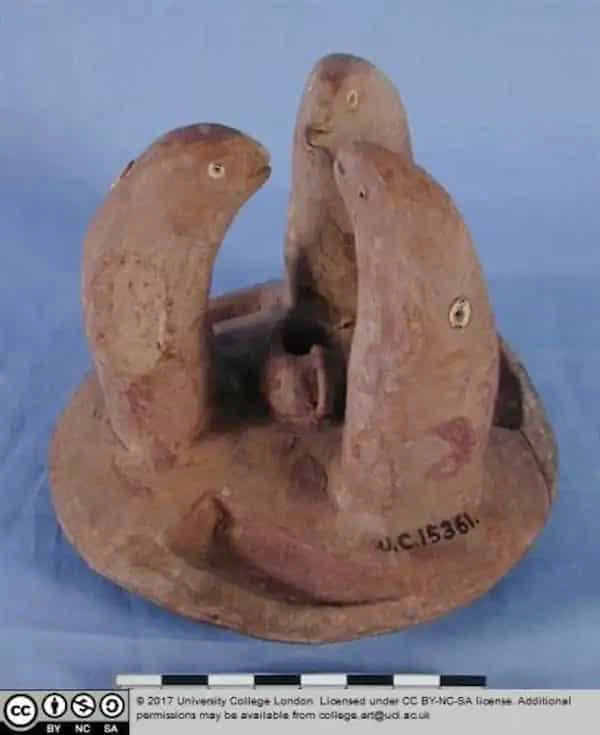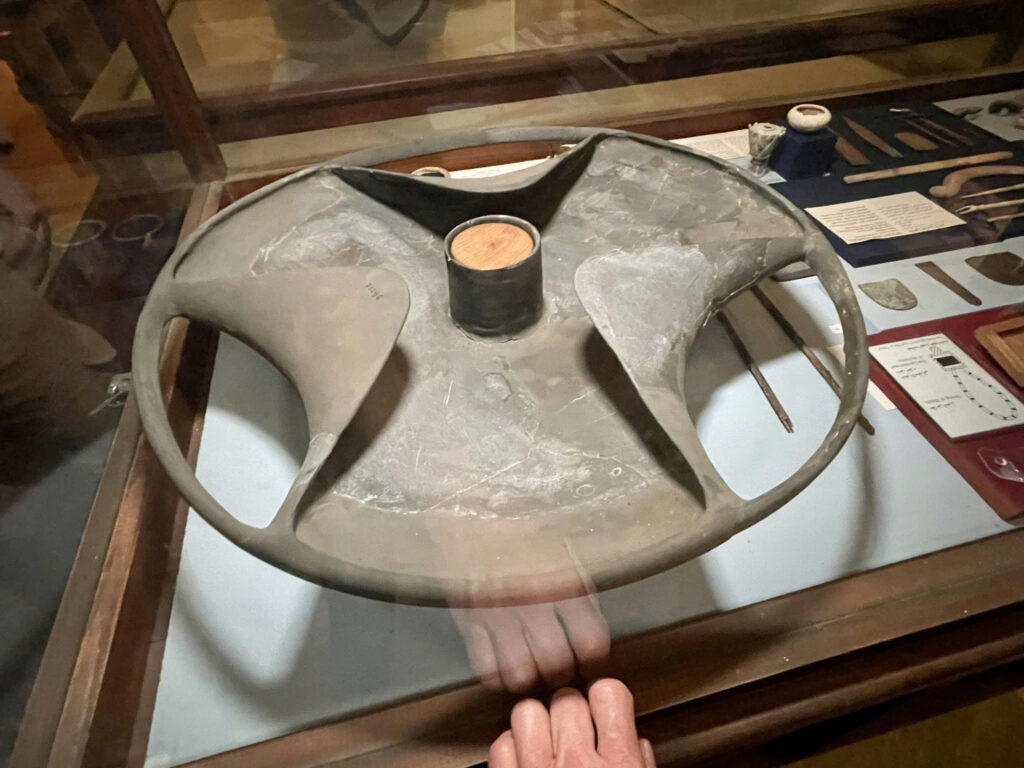The Remarkable Discovery

In the winter of 1936, the sands of Egypt’s Saqqara necropolis yielded an extraordinary find. British archaeologist Walter Bryan Emery, while excavating mastaba S3111, uncovered what would become one of archaeology’s most intriguing mysteries – the Sabu Disk. This remarkable artifact, dating back to the First Dynasty (circa 3000-2800 BC), continues to challenge our understanding of ancient Egyptian technological capabilities.
A Design Ahead of Its Time

The disk’s specifications alone are enough to raise eyebrows among modern engineers. Crafted from slate, this concave artifact measures 61 centimeters in diameter and stands 10.6 centimeters tall. Its most striking feature is a sophisticated three-lobed design radiating from a central 8-centimeter hole, resembling a modern steering wheel or mechanical component.
Unparalleled Craftsmanship

What makes the Sabu Disk truly exceptional is its uniqueness – no other artifact from ancient Egypt shares its distinctive lobed shape. While the First Dynasty was known for producing high-quality stone vessels, this particular piece stands alone in its complexity and precision. The disk’s creation required exceptional skill and understanding of material properties, suggesting it was specially commissioned for its owner, Sabu, a high-ranking Egyptian official.
The Engineering Puzzle

Modern analysis has only deepened the mystery surrounding the disk’s purpose. Engineers from Airbus, studying 3D replicas, noted its surprisingly aerodynamic features. Various theories have emerged about its potential functions:
- A sophisticated container mounted on a support system
- A ceremonial triple-flame lamp
- An ancient energy storage device
- An advanced throwing tool
Historical Context and Significance
The Disk’s Owner
Sabu himself was no ordinary individual. Believed to have lived during the reigns of Pharaohs Den and Anedjib, possibly as Anedjib’s son, he held significant administrative power. His burial arrangements – including a wooden sarcophagus and valuable grave goods – reflect his elevated status in ancient Egyptian society.
Cultural Connections

Intriguingly, a clay figurine from the earlier Nagada II period (3500-3400 BC) shows similar design elements, featuring a round disk surrounded by four snakes. This connection suggests the disk’s design might have deeper cultural or symbolic significance.
Legacy and Modern Implications

Today, the Sabu Disk stands proudly in the Egyptian Museum in Cairo, continuing to captivate visitors and researchers alike. Its existence challenges our assumptions about ancient technological capabilities and serves as a testament to the sophisticated engineering knowledge possessed by early Egyptian civilization – well before the construction of the iconic pyramids.
While its true purpose remains debated, the disk’s immaculate preservation and extraordinary design make it one of archaeology’s most fascinating artifacts, reminding us that ancient civilizations were capable of far more sophisticated engineering than we sometimes assume

